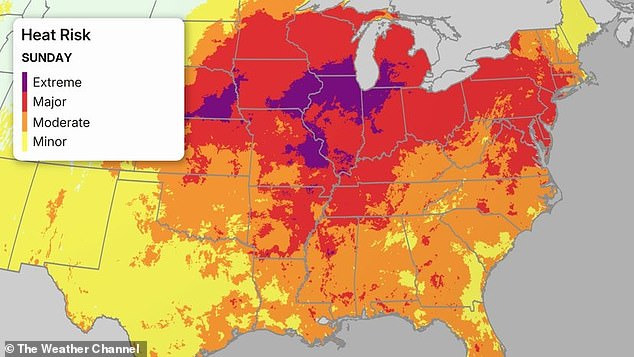
100 Million Americans Brace for Scorching Heat Dome: Track Your Area’s Extreme Heat Risk
Over 100 Million Americans Face Scorching Heat Dome from Midwest to Northeast
A massive heat dome is set to blanket more than 100 million Americans from the Central Plains to the Northeast, bringing extreme temperatures and dangerous heat indices through next week. This high-pressure system traps hot air and blocks cooler weather, creating prolonged, sweltering conditions.
Immediate Threats and Affected Regions
On Friday, central states including Colorado, Nebraska, Kansas, Iowa, Missouri, and Illinois will see temperatures surge into the upper 90s to low 100s°F, with heat indices exceeding 105°F due to high humidity. Cities like Omaha, Topeka, and Kansas City are under excessive heat warnings, posing serious health risks for vulnerable populations.
[Image: Map of U.S. highlighting heat-affected states with temperature icons]
Caption: A heat dome pushes temperatures into triple digits across the Midwest and Central Plains.
Northern states like Minnesota, Wisconsin, and Michigan aren’t spared, with highs in the low-to-mid 90s°F and heat indices nearing 100°F. Minneapolis is among cities under advisories, urging residents to seek cooling shelters.
Eastward Expansion This Weekend
By Saturday, the heat dome shifts to the Ohio Valley, Mid-Atlantic, and Northeast. New York City will hit the low 90s°F, while humidity from the Atlantic Ocean will make it feel near 100°F. On Sunday, Boston and Philadelphia could reach the mid-90s°F, with heat indices up to 104°F.
[Image: Families seeking shade under a park sprinkler in NYC]
Caption: New Yorkers cool off as heat indices approach 100°F ahead of the peak.
Peak Danger on Monday
The heat dome’s peak arrives Monday, June 23, placing the Ohio Valley, Mid-Atlantic, and New England at “high risk” for extreme heat. RealFeel® Temperatures may soar 5–15°F above actual readings, exceeding 100°F even in areas with highs in the 90s. Urban regions will see minimal overnight relief, with lows barely dipping into the 70s.
“This heat wave’s magnitude and duration will shock the system,” warns AccuWeather’s Chad Merrill. Meteorologist Tom Kines adds, “People asking ‘Where’s summer?’—buckle up, it’s coming.”
Health Risks and Safety Measures
Extreme heat is the deadliest U.S. weather-related hazard, claiming over 700 lives annually (CDC). The National Weather Service (NWS) advises:
- Stay hydrated and in air-conditioned spaces.
- Avoid midday outdoor activity.
- Check on vulnerable neighbors.
Cooling centers are open in cities like New York and Philadelphia. However, high humidity combined with intense sunlight heightens risks for heat exhaustion and stroke.
[Image: Elderly man drinking water at a cooling center]
Caption: Cooling centers provide critical relief as humidity and temperatures soar.
Strain on Infrastructure
The prolonged heat threatens power grids as demand for AC surges. AccuWeather’s Alex Duffus notes, “Dangerous heat will spike energy needs and require limited outdoor exposure.”
Long-Term Climate Context
The Fifth National Climate Assessment underscores extreme heat’s growing threat, exacerbated by climate change. Meteorologists stress that early-season heat waves, intensified by high humidity, are particularly perilous as many are unprepared.
Final Precautions
Residents are urged to heed warnings, reschedule outdoor plans, and recognize symptoms like dizziness or nausea as signs of heat illness. As AccuWeather’s Danielle Ehresman warns, “Nighttime offers little respite, making AC access essential.”
Stay informed through local forecasts and prioritize safety as this historic heat dome tests resilience across the nation.
[Image: Thermometer reading 105°F against a blazing sun]
Caption: With indices over 105°F, this heatwave demands vigilance to prevent tragedies.
Word count: ~600


